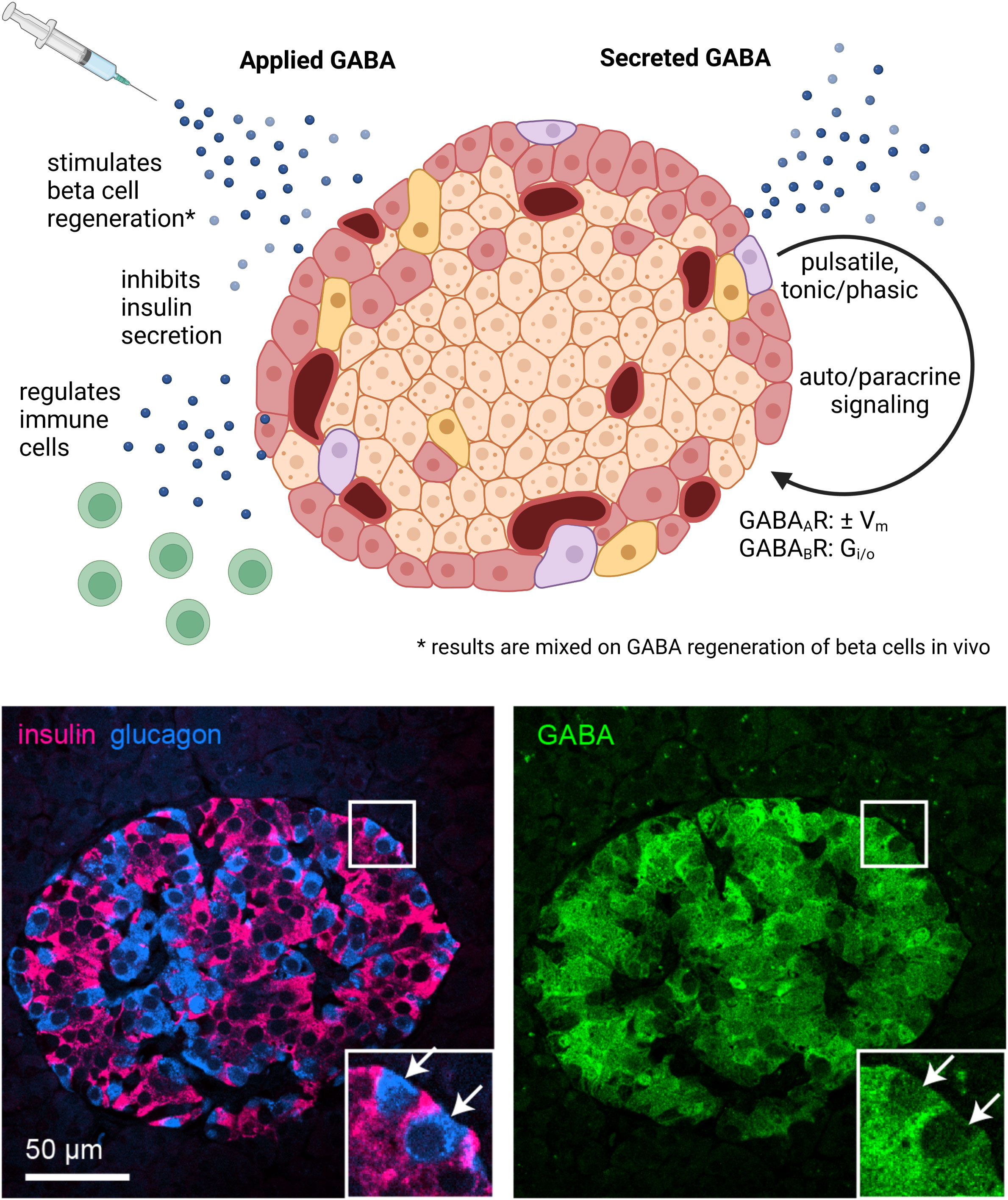
94% of researchers rate our articles as excellent or good
Learn more about the work of our research integrity team to safeguard the quality of each article we publish.
Find out more
ERRATUM article
Front. Endocrinol., 02 October 2023
Sec. Diabetes: Molecular Mechanisms
Volume 14 - 2023 | https://doi.org/10.3389/fendo.2023.1301830
This article is an erratum on:
The role of GABA in islet function
An Erratum on
The role of GABA in islet function
by Hagan DW, Ferreira SM, Santos GJ and Phelps EA (2022) Front. Endocrinol. 13:972115. doi: 10.3389/fendo.2022.972115
Due to a production error, there was a mistake in the penultimate sentence of the caption of Figure 1. The subscript “A” in “GABAAR” should have been “B”. The corrected caption appears below, along with Figure 1.

Figure 1 GABA in the whole islet. Application of exogenous GABA has various effects on the islet including stimulation of beta cell regeneration, inhibition of insulin secretion, and negative regulation of immune cells. Endogenous GABA levels are highly enriched in the islet, as high as in the brain, and GABA is synthesized in and secreted from the beta cells. Immunofluorescence image depicts a human islet. GABA is secreted via multiple pathways that are both regulated and unregulated by glucose and with pulsatile, tonic, or phasic dynamics. Once secreted, GABA acts via GABAAR ligand-gated chloride channels and GABAAR inhibitory G protein coupled receptors. Set by the chloride equilibrium potential, in beta cells GABAAR signaling can be excitatory in low glucose and inhibitory in high glucose, while in alpha cells GABAAR signaling is inhibitory. GABABR signaling is also inhibitory but may only be active in mouse and not human beta cells under typical physiological conditions. Created with BioRender.com.
The publisher apologizes for this mistake. The original version of this article has been updated.
Keywords: γ-Aminobutyric acid (GABA), islet, pancreas, signaling, receptor, insulin, beta cell
Citation: Frontiers Production Office (2023) Erratum: The role of GABA in islet function. Front. Endocrinol. 14:1301830. doi: 10.3389/fendo.2023.1301830
Received: 25 September 2023; Accepted: 25 September 2023;
Published: 02 October 2023.
Approved by:
Frontiers Editorial Office, Frontiers Media SA, SwitzerlandCopyright © 2023 Frontiers Production Office. This is an open-access article distributed under the terms of the Creative Commons Attribution License (CC BY). The use, distribution or reproduction in other forums is permitted, provided the original author(s) and the copyright owner(s) are credited and that the original publication in this journal is cited, in accordance with accepted academic practice. No use, distribution or reproduction is permitted which does not comply with these terms.
*Correspondence: Frontiers Production Office, cHJvZHVjdGlvbi5vZmZpY2VAZnJvbnRpZXJzaW4ub3Jn
Disclaimer: All claims expressed in this article are solely those of the authors and do not necessarily represent those of their affiliated organizations, or those of the publisher, the editors and the reviewers. Any product that may be evaluated in this article or claim that may be made by its manufacturer is not guaranteed or endorsed by the publisher.
Research integrity at Frontiers

Learn more about the work of our research integrity team to safeguard the quality of each article we publish.